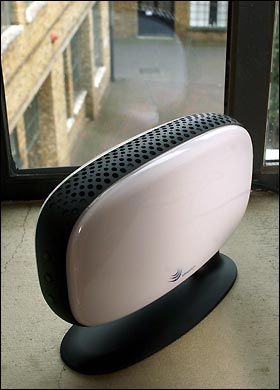
Wilson Electronics launches SignalBoost DB Pro to improve in-building
cell signal strength. It's easy to install kit that delivers the strongest cellular connection possible for mobile phones and data cards in any building experiencing weak cell signals.
ST. GEORGE, Utah – April 20, 2009 – Wilson Electronics, the leading provider of quality amplifiers and antennas for cellular phones and data cards, today announced the launch of the Wilson Electronics’ SignalBoost DB Pro™, the in-building wireless cellular amplifier kit that significantly improves voice and data performance of any cellular device, on any network, inside buildings or homes experiencing weak signals. Unique to the industry, the SignalBoost DB Pro is designed for simple installation without sacrificing the high-quality performance Wilson Electronics is known for.
“Dependency on cellular signals is on the rise as more and more people choose to drop their landlines in favor of their cell phones, making the need for strong cellular signal connection in the home, office, or any other building more important than ever before,“ said Joe Banos, COO of Wilson Electronics. “While most solutions on the market require complex installation or do not deliver the quality cellular signal enhancement promised, the SignalBoost DB Pro offers consumers, and professional installers, an easy to install, dependable solution, giving cellular users the confidence that their signal connections will be there when they need it most.”
At the center of the DB Pro kit is the dual-band amplifier with a new high gain design. An external omnidirectional high gain antenna with multiple mounting options eliminates researching cell site locations and antenna pointing. The inside panel antenna which rebroadcasts the amplified signal inside the home is designed for easy installation. All components are interconnected using provided standard TV cable which is also easily available and often found pre-installed, simplifying cable runs.
The SignalBoost DB Pro has been tested in real world, weak signal environments ensuring that consumers receive cell signals that could go undetected by most cell phones and data cards. Wilson Electronics’ patent-pending techniques monitor and prevent harmful interference to cell sites, allowing the amplifier to perform at the highest specifications for maximum performance. The kit increases power to the cell site up to 20 times over a typical cell phone and provides the bulk of the power needed for signal reception and transmission, allowing users also benefit from longer cell phone battery life. With minimal outside signal the DB Pro can typically provide coverage for an average 2,000 square foot home. If there is a stronger exterior signal, for example if the exterior antenna can be placed on the roof or above the tree line, the coverage could be up to 25,000 square feet.
The Wilson Electronics’ SignalBoost DB Pro kit includes:
* Dual Band bi-directional amplifier (62dB 75 Ohm)
* Power supply (110/220 V AC)
* Omni-directional exterior antenna with multiple mounting options (75 Ohm)
* Panel antenna (75 Ohm)
* 3 sets of standard TV Cable (RG-6 Cable in 50, 30 and 20 ft lengths)
* 30-day customer satisfaction money back guarantee
* One year warranty on all components
The SignalBoost DB Pro is now available through authorized Wilson Electronics’ dealers with an average selling price around $600. Visit the dealer locator page at www.wilsonelectronics.com to search for dealers by ZIP code, or to buy the product immediately from an online retail partner. For more information on how to become a Wilson Electronics’ dealer, visit www.wilsonelectronics.com/becomeadealer.php
About Wilson Electronics
Wilson Electronics, Inc., a leader in the wireless communications industry for over 40 years, pioneered the design and manufacture of a variety of cellular amplifiers, antennas and related components that significantly improve cellular communications in mobile or in-building installations. Wilson Electronics has consistently led the industry in performance standards and holds a number of patents including the industry’s fastest and most reliable method of oscillation prevention and carrier cell site protection. Wilson Electronics’ designs consistently outperform the competition in real world performance. All Wilson Electronics products are engineered, assembled and tested in the company’s headquarters in St. George, Utah. Wilson Electronics amplifiers fully comply with FCC regulations for cellular devices and are FCC and Industry Canada type accepted. For more information, visit
www.wilsonelectronics.com.
*The SignalBoost DB Pro works with all carriers except those on the iDEN frequency. Contact Wilson Electronics for specific iDEN/Nextel Solutions










